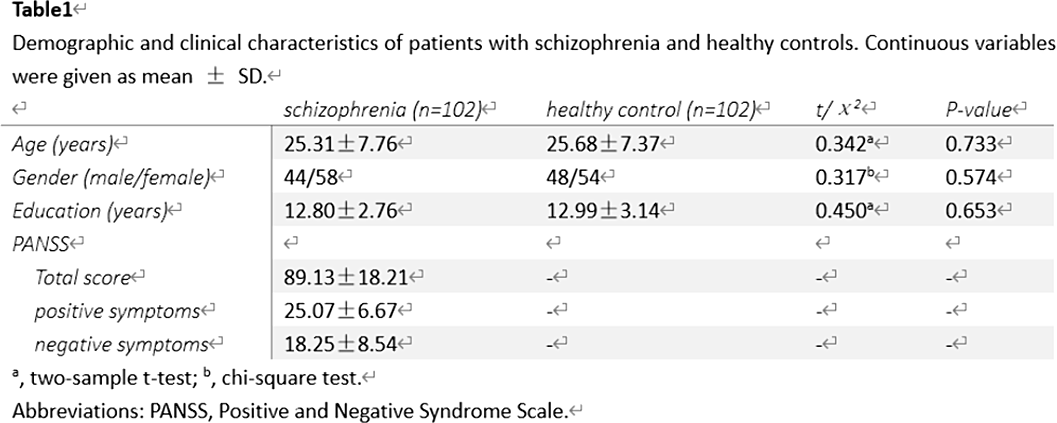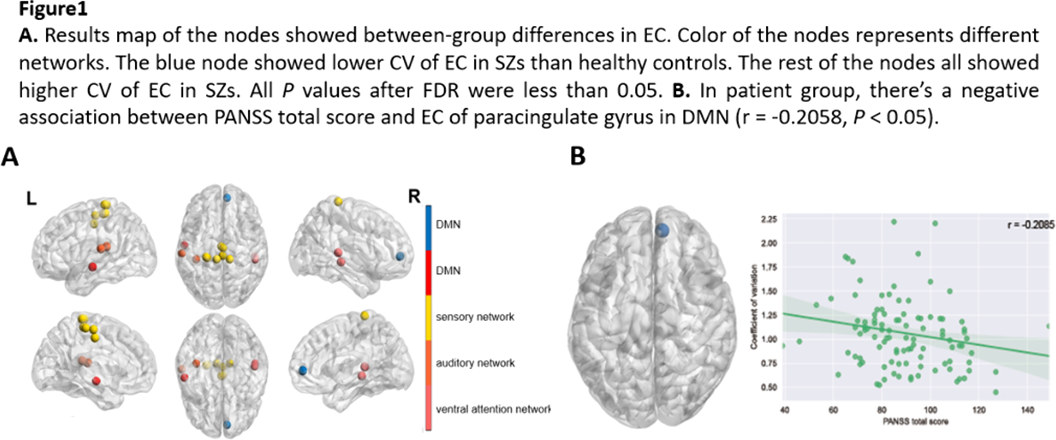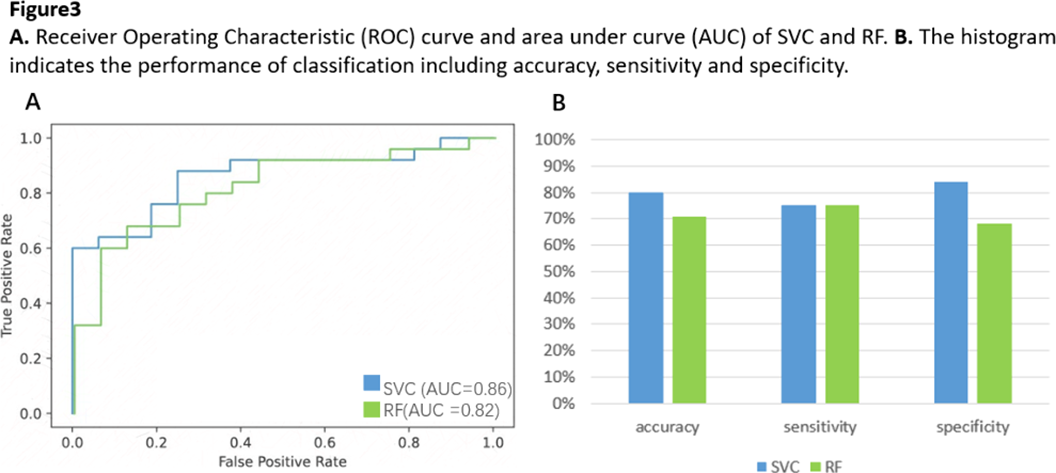No CrossRef data available.
Article contents
Altered dynamic functional topology in first-episode untreated patients with schizophrenia can aid in early diagnosis
Published online by Cambridge University Press: 01 September 2022
Abstract
There is a growing consensus on brain networks that it is not immutable but rather a dynamic complex system for adapting environment. The neuroimaging research studying how brain regions work collaboratively with dynamic methods had demonstrated its effectiveness in revealing the neural mechanisms of schizophrenia.
To investigate altered dynamic brain functional topology in first-episode untreated schizophrenia patients (SZs) and establish classification models to find objective brain imaging biomarkers.
Resting-state-functional magnetic resonance data for SZs and matched healthy controls were obtained(Table1).

Power-264-template was used to extract nodes and sliding-window approach was carried out to establish functional connectivity matrices. Functional topology was assessed by eigenvector centrality(EC) and node efficiency and its time-fluctuating was evaluated with coefficient of variation(CV). Group differences of dynamic topology and correlation analysis between Positive and Negative Syndrome Scale(PANSS) scores and topology indices showing group differences, which also were used in establishing classification models, was examed.
The CV of node efficiency in angular and paracingulate gyrus was larger in SZs. There are 13 nodes assigned into several brain networks displaying altered CV of EC between groups(Figure1.A). Fluctuation of EC of the node in DMN, which was lower in SZs, showed negative correlation with PANSS total scores(Figure1.B). Dynamic functional topology of above nodes was used to train classification models and demonstrated 80% and 71% accuracy for support vector classification(SVC) and random forest(RF), respectively(Figure2).


Dynamic functional topology illustrated a capability in identifying SZs. Aberrated dynamics of DMN relevant to severity of patient’s symptoms could reveal the reason why it contributed to classification.
No significant relationships.
Keywords
- Type
- Abstract
- Information
- European Psychiatry , Volume 65 , Special Issue S1: Abstracts of the 30th European Congress of Psychiatry , June 2022 , pp. S115
- Creative Commons
- This is an Open Access article, distributed under the terms of the Creative Commons Attribution licence (http://creativecommons.org/licenses/by/4.0/), which permits unrestricted re-use, distribution, and reproduction in any medium, provided the original work is properly cited.
- Copyright
- © The Author(s), 2022. Published by Cambridge University Press on behalf of the European Psychiatric Association





Comments
No Comments have been published for this article.